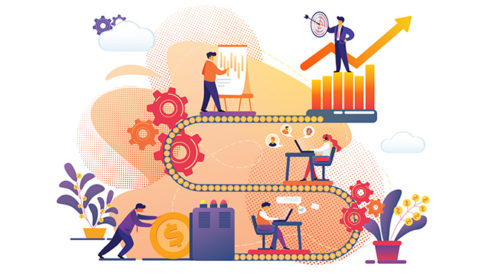
Last year, SD Times declared that 2019 would be the year of the value stream as businesses started to look more into the value they were getting out of their IT processes.
“I can go in and solve my release process and improve my release time, but if I don’t look at how long it takes for that idea to go all the way through, then I miss time to market. Time to market and visual transformations right now is very, very important,” said Lance Knight, senior vice president at ConnectALL, an Orasi company.
However, with any new terminology and approach, it took some time throughout the year for the industry to really understand what value stream management was and how it could be used to gain an advantage. Eric Robertson, vice president of product management and strategy execution at CollabNet VersionOne, defined the term as “an improvement strategy that links the needs of top management with the needs of the operations group. It is a combination of people, process and technology. It is mapping, measuring, visualizing, and then being able to understand from your planning, your epics, your stories, your work items, through these heterogeneous tools all the way through your enterprise software delivery lines, being able to understand that what you’re delivering aligns with the business objectives, and you’re being effective there.”
And many companies jumped on value stream with the release of new products.
CollabNet VersionOne focused its winter 2017 release on value stream management with new features and functionalities to help organizations collaborate and work intelligently. The company also announced it would be acquired by TPG Capital in September for its enterprise DevOps and value stream management capabilities. In addition, TPG Capital provided $500 million of equity capital, which CollabNet plans to use to drive AI and value stream management throughout the enteprise.
Planview released its new Agile Scaler offering in March to help extend Agile delivery across teams. It aims to connect multiple teams, tools and workflows to as well as provide visibility into the flow of work.
Cloudbees announced its Software Delivery Management Platform, Product Hub and Value Stream Management modules in August at DevOps World | Jenkins World. The new solution includes a central place for integrated visibility and orchestration, a policy engine, a dashboard for continuous improvement and retrospectives, real-time value stream management capabilities, and integrated feature flag management.
Jama Software announced it would be offering a cloud version of Tasktop Integration Hub in September to enable customers to automate and visualize the flow of their software delivery value stream. It enabled teams to integrate Jama Connect with ALM, PLM, development and QA tools.
Tasktop also had a number of its own value stream releases with the addition of test management integration capabilities to Integration Hub in May, and a partnership with Planview in May to extend its Agile Scaler offering and help teams transform and scale on their own terms and timeline. Tasktop also teamed up with Tricentis in September for improved quality throughout the software delivery value stream. Together the companies will provide test automation, information flow automation, and value stream metrics. Lastly, Tasktop announced the limited release of Tasktop Viz in October designed to measure the flow of business value in software delivery.
By the end of the year, the importance of value stream management was evident. The next step, which will continue throughout next year, is to now apply new roles to the new way of thinking. According to Dominica DeGrandis, the new principal flow advisor at Tasktop — who spoke at the DevOps Enterprise Summit in Las Vegas in October — we can expect to see the program management office morph into a value management office with value stream architects, value stream product leads, and product journey owners and champions.






